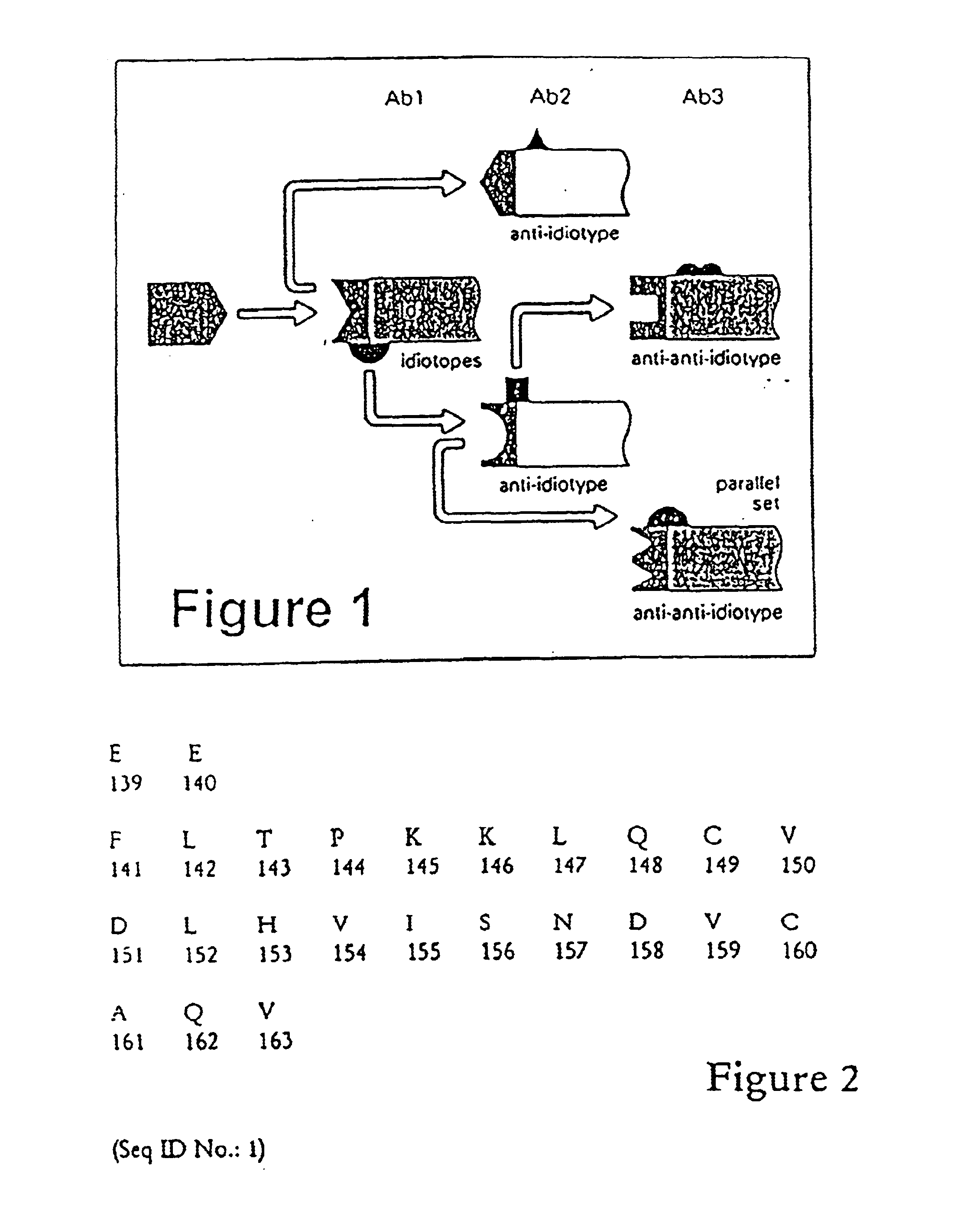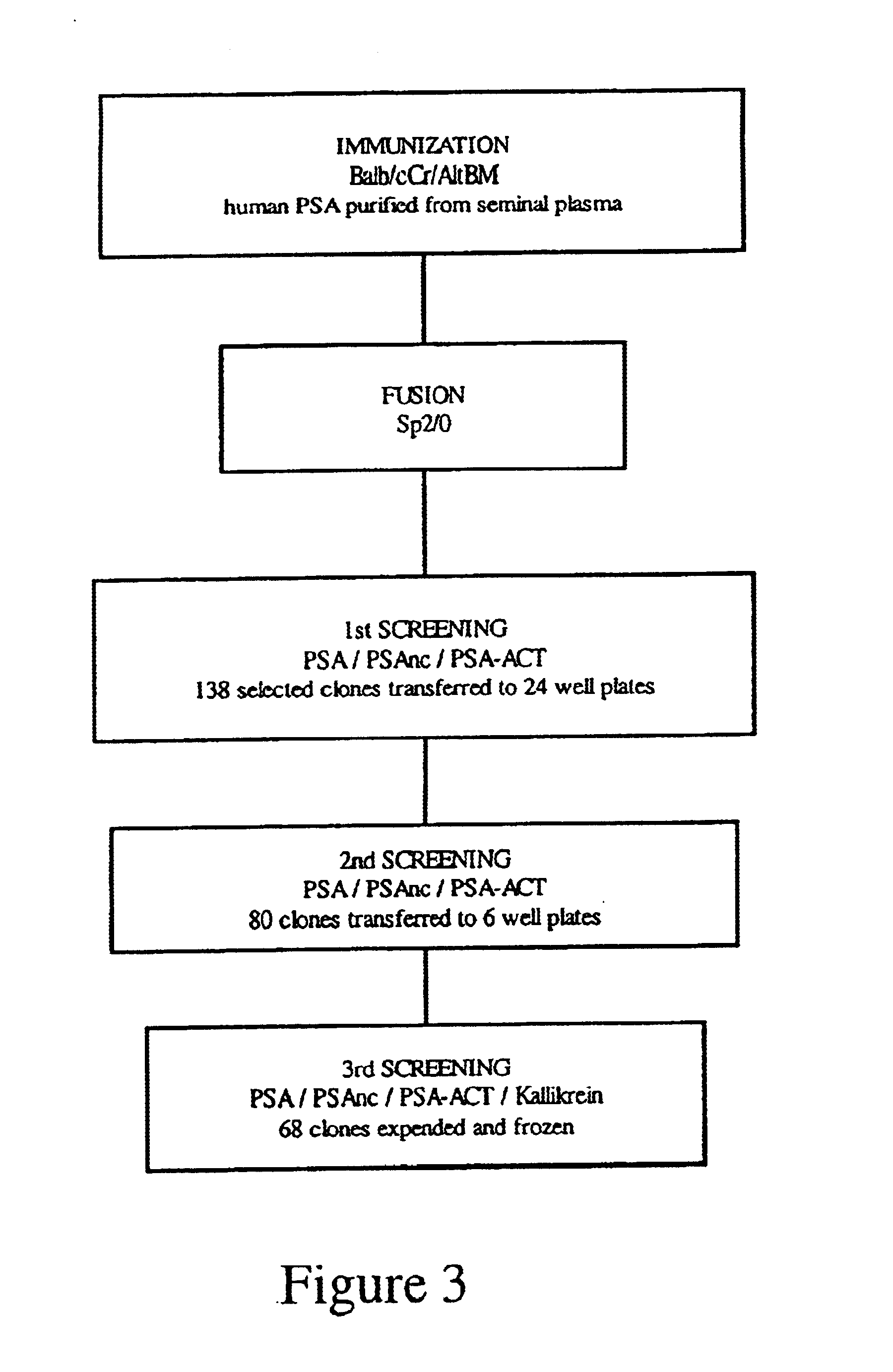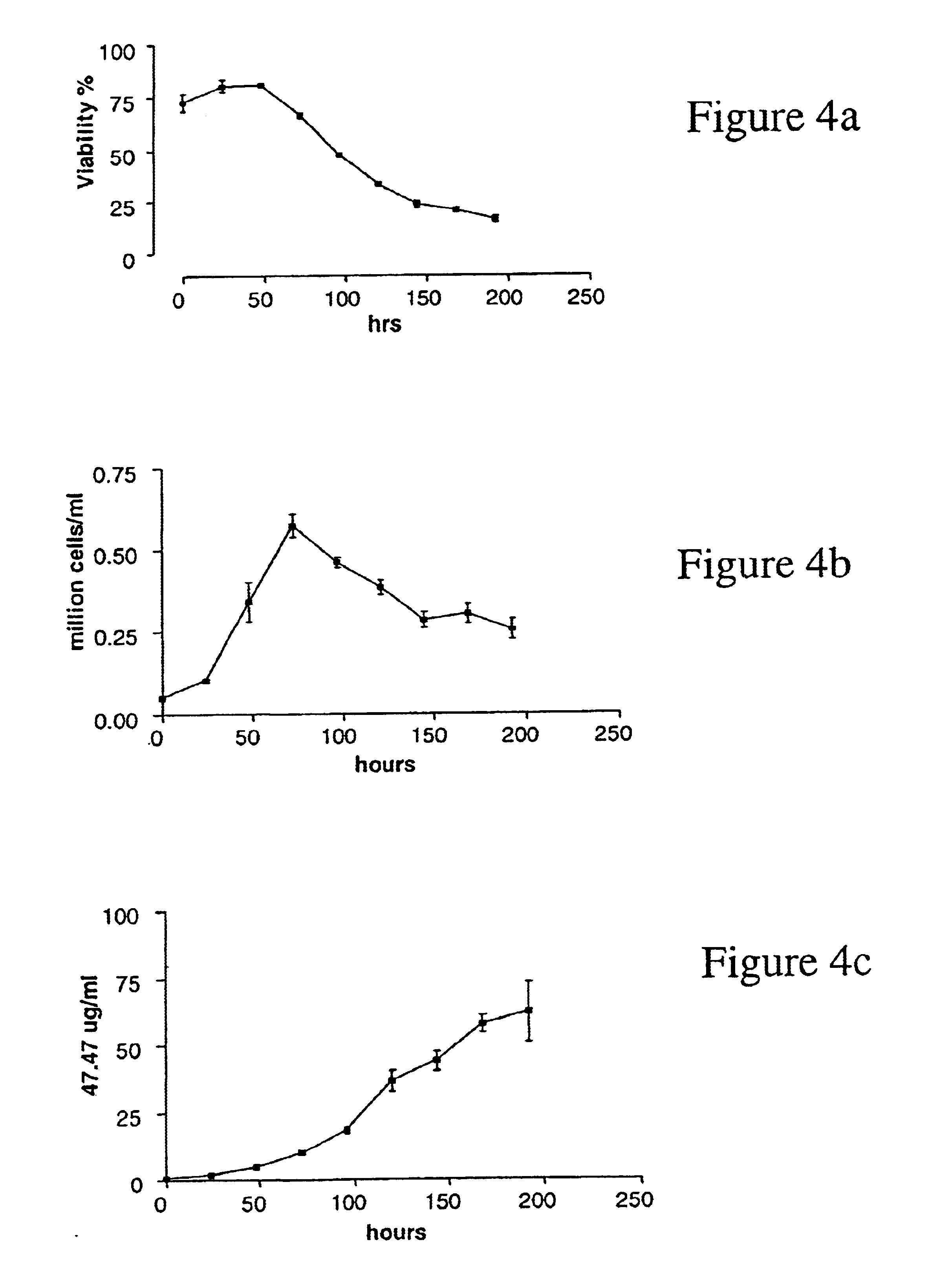Reagents and methods for inducing an immune response to prostate specific antigen
a prostate specific and immune response technology, applied in the field of prostate specific antigen generation, can solve the problems of reducing the response or no response, affecting the recognition phase of the immune system, and no effective chemotherapeutic agent that can control the growth of androgen-dependent prostate tumor cells, etc., and achieves the effect of reducing tumor burden and negative correlation between ab3 levels
- Summary
- Abstract
- Description
- Claims
- Application Information
AI Technical Summary
Benefits of technology
Problems solved by technology
Method used
Image
Examples
example 1
Production of AR47.47
[0067]Hybridoma clones secreting anti-PSA antibodies were produced by fusion of the murine myeloma cells Sp2 / O with the splenocytes of a Balb / c mouse immunized with human PSA (FIG. 3).
Immunogen: PSA purified from human seminal plasma was obtained from Scripps Laboratories, San Diego, Calif. [Cat # P0723 (purity, about 50%); Cat # P0725 (purity, 99%)].
[0068]Mice: Male Balb / cCr / AltBM mice, 6 weeks of age, were purchased from Jackson Laboratories and housed on 7th floor Dentistry / Pharmacy Building (HSLAS facilities).
[0069]Immunization Protocol: Mice were immunized i.p. with 30 μg of PSA (Cat # P0723) in complete Freund adjuvant. The mice received subsequently two i.p. injections at 10 days interval with 30 μg of PSA (Cat # P0723). The first booster was performed in incomplete Freund adjuvant whereas the 2nd booster was performed in PBS. The serum levels of anti-PSA antibodies were measured by ELISA on PSA coated plates (ELISA # 1) and the mouse with the higher seru...
example 2
Clone Culture and Productivity
Growth Characteristics in Standard Medium
[0088]Using standard medium (RPMI 1640, 10% FBS, 0.3 mg / ml glutamine, 100 μg / ml streptomycin, 100 U / ml penicillin), AR 47.47R6R6 hybridoma cells were seeded at 5×104 cells / ml in 6 well plates and cultured for several days. Each day the cell concentration was defined by counting the cells manually with an hematocytometer, the cell viability was determined by trypan blue exclusion, and the antibody concentration in the culture media was measured by ELISA (ELISA #8). Three independent experiments were performed.
[0089]The growth characteristics of the AR47.47R6R6 hybridoma clone are shown in FIG. 4 and the following table:
[0090]
Exp. #1Exp. #2Exp. #3FBS Lot #1FBS Lot #1FBS Lot #2Maximum cell concentration0.630.660.61(million viable cells / ml)Maximum viability (%)838992generation time (hr)19.521.926.4Maximum MAb secretion6561.357.4(μg / ml)
[0091]The AR47.47R6R6 clone has a generation time of 22 hours and can grow to a max...
example 3
[0096]AR 47.47 was purified by affinity chromatography from either ascites or from cell culture medium. The affinity column used is the Gamma Bind Plus Sepharose from Pharmacia Biotech. The purification of the antibody was performed according to the manufacturer instruction protocol. The chromatography was monitored by measuring the absorbency at 280 nm (total protein concentration) and by testing the different fractions for the presence of anti-PSA antibody (ELISA #1). The fractions containing purified antibody were concentrated and dialyzed against PBS. The purity of the antibody was analyzed by SDS-PAGE. The concentration of the antibody in the starting materials and in the purified fractions was determined by ELISA (ELISA #8) and by measuring the absorbency at 280 nm (the conversion of the absorbency value to a concentration value was made using an ε=1.46).
[0097]AR47.47 is an IgG1 antibody and interacts specifically with free PSA as well as with PSA complexed with ACT. Synthetic...
PUM
| Property | Measurement | Unit |
|---|---|---|
| body weight | aaaaa | aaaaa |
| concentration | aaaaa | aaaaa |
| generation time | aaaaa | aaaaa |
Abstract
Description
Claims
Application Information
 Login to View More
Login to View More - R&D
- Intellectual Property
- Life Sciences
- Materials
- Tech Scout
- Unparalleled Data Quality
- Higher Quality Content
- 60% Fewer Hallucinations
Browse by: Latest US Patents, China's latest patents, Technical Efficacy Thesaurus, Application Domain, Technology Topic, Popular Technical Reports.
© 2025 PatSnap. All rights reserved.Legal|Privacy policy|Modern Slavery Act Transparency Statement|Sitemap|About US| Contact US: help@patsnap.com



